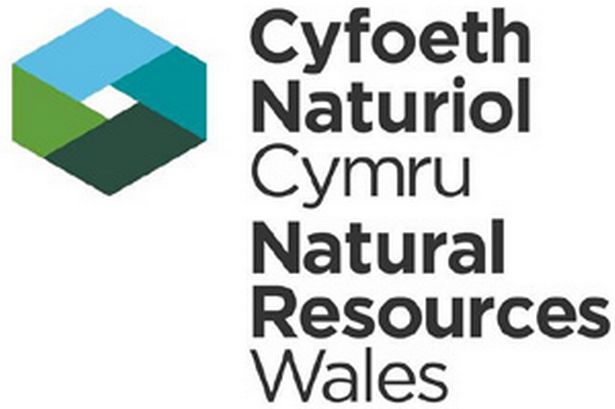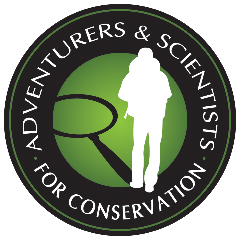Living near the sea can have many advantages as we can breathe in the sea air, be closer to nature and live more stress-free lives! A massive 70% of the largest cities in the world are located along the coastline, as they provide jobs, resources and recreational activities. However coastal cities are unfortunately causing negative impacts to the wildlife that surrounds them and are under threat from nature itself 1.
Two of the major issues that coastal communities face are coastal erosion and a rising sea level, with an estimated rise of 1 meter by 2100 2. In the fight to tackle these issues sea defences in the form of seawalls have been put up as a shield that protects the coast from excessive erosion and helps reduce the risk of flooding in low-lying locations. These seawalls are usually made of concrete and are vertical slabs paving the shoreline 3.
However, by introducing these protective measures we are taking away from the species that live in the coastal environments. These species are a necessary food source for many marine animals and help keep the waters clean. Barnacles are an excellent example of this as they are eaten by starfish, dog winkles and ribbon worms, whilst also being filter feeders that feed on plankton and particles with the water column 4. These coastal species are also very sensitive to changes within their environments making them good bioindicators, meaning their presence or lack of can show if there are contaminants in the environment 5.
Seawall defences are taking away the habitats from costal species that are specialised to this environment, their vertical and plain design makes it difficult for organisms to attach as they are unable to get any grip or leverage on the wall 6. Rocky coasts are full of natural crevices, textures and rock pools which provide a diverse habitat for many organisms. Many species can only live in these intertidal zones because they are dependent on the fluctuations of the tide. Organisms including crustaceans, molluscs, small fish, and algae live in these types of habitats and with a high demand for seawalls being built their habitat space is declining 7.
What are our solutions?
Eco-engineering is a new answer that is trying to make structures that human society needs but making them function in such a way that it also benefits nature instead of taking away.
A new invention called Vertipools are being trailed out where man-made rock pools are being added to existing seawall, they are in designed in the shape of a tetrahedral that mimics the bow of a boat as best to deflect oncoming waves 8. These Vertipools attracted organisms that had not previously been able to live on the seawall including, crabs, starfishes, and small fishes because of their water retention abilities. This solution provides a cost-effective way of increasing biodiversity in marinas, ports and sea defences whilst increasing ecological enhancement 8.
Another method to increase the species biodiversity is adding textured tiled surfaces onto existing seawall. This provides a substitute habitat that is easy for species to attach to opposed to vertical seawall which is lacking in natural crevices. These tiles give access to footholds, give shelter and protection. These tiles can be made from concrete or even from recycled plastic. These tiles have been found to help increase the number of organisms such as mussels, oysters, and seaweeds 9.
This type of eco-engineering can be seen on the seawall in New Quay, with the Ecostructure project. Where drilled pits and crevices have been added to give species added shade and protection, groove-y tiles have been added to give species a chance to attach themselves and vertipools giving species much needed areas of water retention 9.
Adding eco-engineered structures would benefit the environment as it would help increase the biodiversity of seawall. This innovative solution to the threat of coastal erosion is one that can protect human populations on the coast whilst preserving the important biodiversity of the costal environment.
References
- Raudsepp-Hearne, Peterson, G. D., Tengö, M., Bennett, E. M., Holland, T., Benessaiah, K., MacDonald, G. K., & Pfeifer, L. (2010). Untangling the Environmentalist’s Paradox: Why is Human Well-Being Increasing as Ecosystem Services Degrade? Bioscience, 60(8), 576–589. https://doi.org/10.1525/bio.2010.60.8.4
- Anzidei, Doumaz, F., Vecchio, A., Serpelloni, E., Pizzimenti, L., Civico, R., Martino, G., & Enei, F. (2020). Sea Level Rise Scenario for 2100 A.D. in the Heritage Site of Pyrgi (Santa Severa, Italy). Journal of Marine Science and Engineering, 8(2), 1–18. https://doi.org/10.3390/jmse8020064
- Firth, Thompson, R. ., Bohn, K., Abbiati, M., Airoldi, L., Bouma, T. ., Bozzeda, F., Ceccherelli, V. ., Colangelo, M. ., Evans, A., Ferrario, F., Hanley, M. ., Hinz, H., Hoggart, S. P. ., Jackson, J. ., Moore, P., Morgan, E. ., Perkol-Finkel, S., Skov, M. ., Hawkins, S. . (2014). Between a rock and a hard place: Environmental and engineering considerations when designing coastal defence structures. Coastal Engineering (Amsterdam), 87, 122–135. https://doi.org/10.1016/j.coastaleng.2013.10.015
- Salant, & Shanks, A. L. (2018). Surf-zone hydrodynamics alter phytoplankton subsidies affecting reproductive output and growth of tidal filter feeders. Ecology (Durham), 99(8), 1878–1889. https://doi.org/10.1002/ecy.2415
- Chalkley, Child, F., Al-Thaqafi, K., Dean, A. P., White, K. N., & Pittman, J. K. (2019). Macroalgae as spatial and temporal bioindicators of coastal metal pollution following remediation and diversion of acid mine drainage. Ecotoxicology and Environmental Safety, 182, 109458–109458. https://doi.org/10.1016/j.ecoenv.2019.109458
- Bradford, Astudillo, J. C., Lau, E. T. ., Perkins, M. J., Lo, C. C., Li, T. C. ., Lam, C. S., Ng, T. P. ., Strain, E. M. ., Steinberg, P. D., & Leung, K. M. . (2020). Provision of refugia and seeding with native bivalves can enhance biodiversity on vertical seawalls. Marine Pollution Bulletin, 160, 111578–111578. https://doi.org/10.1016/j.marpolbul.2020.111578
- Strain, Cumbo, V. R., Morris, R. L., Steinberg, P. D., & Bishop, M. J. (2020). Interacting effects of habitat structure and seeding with oysters on the intertidal biodiversity of seawalls. PloS One, 15(7), e0230807–e0230807. https://doi.org/10.1371/journal.pone.0230807
- Hall, Herbert, R. J. H., Britton, J. R., Boyd, I. M., & George, N. C. (2019). Shelving the Coast With Vertipools: Retrofitting Artificial Rock Pools on Coastal Structures as Mitigation for Coastal Squeeze. Frontiers in Marine Science, 6. https://doi.org/10.3389/fmars.2019.00456
- Salauddin, O’Sullivan, J. J., Abolfathi, S., & Pearson, J. M. (2021). Eco-Engineering of Seawalls-An Opportunity for Enhanced Climate Resilience From Increased Topographic Complexity. Frontiers in Marine Science, 8. https://doi.org/10.3389/fmars.2021.674630
Meryn Smith- Research Intern

























